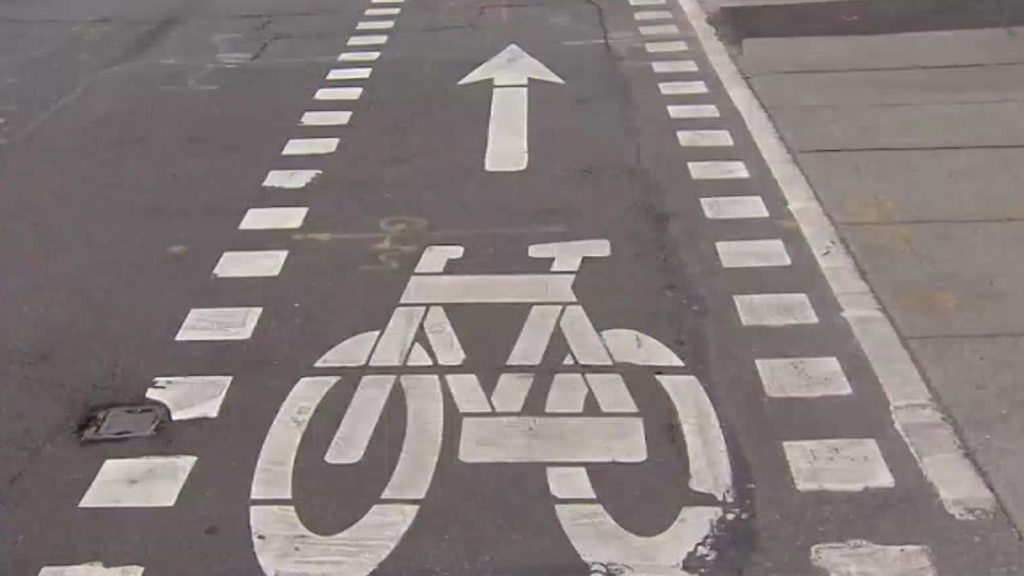CEO of massive rail project says hurdles abound — and express trains may be solution

Posted October 31, 2023 9:56 am.
Last Updated October 31, 2023 3:12 pm.
MONTREAL — From his offices on the 34th floor of 1 Place Ville Marie, Martin Imbleau has a nearly panoramic view of Montreal.
Clearly in view are Central Station and Victoria Bridge, which are both essential to passenger and freight traffic through the city.
Less evident is the route to be traced by Via Rail’s planned high-frequency rail (HFR) line from Toronto to Quebec City, a project headed by Imbleau to build a new set of dedicated tracks slated for completion in the mid-2030s.
Simply entering and exiting big cities quickly will be one of the thorniest challenges, Imbleau said.
“If you go to the Gare Centrale or Union Station or even the Gare du Palais in Quebec (City), you realize that on the last segment to reach those train stations the trains go fairly slowly. So it really affects your journey time,” Imbleau, CEO of Via HFR Inc. — an arm’s-length subsidiary of the passenger rail Crown corporation — said in an interview.
“One of the constraints is to get in and get out of the cities in a faster way.”
The existing tracks in and around the Greater Toronto Area are largely owned by regional transport authority Metrolinx and Canadian National Railway Co., with little room for more lines in a dense downtown.
In Quebec, the planned route from its capital along the north shore of the St. Lawrence River to Montreal would likely mean entering that city from the north. This raises the question of whether a new tunnel through Mount Royal would be created — the Caisse de dépôt et placement du Québec’s infrastructure arm has ruled out a second set of tracks through the existing tunnel, where the REM commuter line runs — to reach the heart of the city.
“It’s not about frequency only. It’s about being fast. It’s about being reliable,” Imbleau said.
While stops in Peterborough, Ont., Ottawa and Trois Rivières, Que. are mandated, there could be express trains that whiz through those cities without stopping, he said — as well as trains that do serve those communities.
“Imagine being able to (do) Peterborough-Toronto or Trois Rivières-Quebec in around an hour and 15 minutes. That changes completely how you commute between a region and a city,” Imbleau said.
The three consortiums selected to submit proposals for the roughly 1,000-kilometre line must each present two options: one allowing for speeds of up to 200 km/h, and another that can go even faster during high-speed legs of the journey.
Imbleau noted that the average speed of some trains deemed high-speed in Europe, such as France’s 600-kilometre Paris-Montpellier route, notch below 200 km/h and takes well over three hours.
“One of the targets is three and a half hours, so it’s pretty fast,” he said, referring to the Toronto-Montreal route, which would cover roughly the same distance by way of Ottawa.
The second speed option would likely increase the project’s price tag. It was pegged at between $6 billion and $12 billion by former transport minister Omar Alghabra when it launched in 2021. Authorities have since shied away from estimates, however.
“For sure I’d be completely wrong,” said Imbleau, stating it wouldn’t be prudent to discuss numbers until the proposals land.
High-speed rail lines demand full-grade separation at road crossings, potentially requiring hundreds of millions of dollars for construction of dozens of overpasses and underpasses. Inrural areas, this also requires drainage pumps, which in turn can require generators, piling onto maintenance costs.
Typically, some crossings are simply removed to save costs, aggravating local residents who may have to travel several more kilometres to traverse the tracks.
A Toronto-Montreal train that takes roughly four hours — the alternative target — would still lure many more riders and make it more financially self-supporting than Via Rail’s current route, which takes five hours between Toronto and Montreal and tolerates speeds no higher than 160 km/h. It runs on tracks owned mainly by CN, whose slower freight trains have priority, preventing more frequent trips.
Via enjoyed a subsidy of $70 per passenger on its Montreal-Ottawa-Toronto route last year, and $1,029 per passenger on its Canadian line between Vancouver and Toronto — all drawn from $672.5 million in government funding.
“One of the goals of the project is to reduce the subsidy being given to operate the service. It’s to be as self-sufficient as possible,” Imbleau said.
He projected that the corridor would host 17 million riders per year by mid-century. Last year Via Rail’s eastern corridor, which includes Toronto, Ottawa, Montreal and Quebec City, furnished 2.48 million passengers, or three-quarters of its network-wide ridership.
However, the timeline for the zippy trains has already been slightly delayed, even before the proposals arrive. Initially planned for the early-2030s, Alghabra pinpointed the mid-2030s in July. The deadline for proposals was initially mid-July, but has now been pushed back to next fall, Via HFR said.
As for the speed of the trip itself, Pierre Barrieau, who teaches transportation and urban planning at the Université de Montreal, said steering clear of downtown Toronto and Montreal makes sense. Instead, a promising option is to drop riders at a suburban or midtown station that links up with a local or regional line.
“It’s just too expensive bringing the trains downtown,” he said. “That’s where you’re also going to be wasting incredible amounts of time.”
This report by The Canadian Press was first published Oct. 31, 2023.
Christopher Reynolds, The Canadian Press








